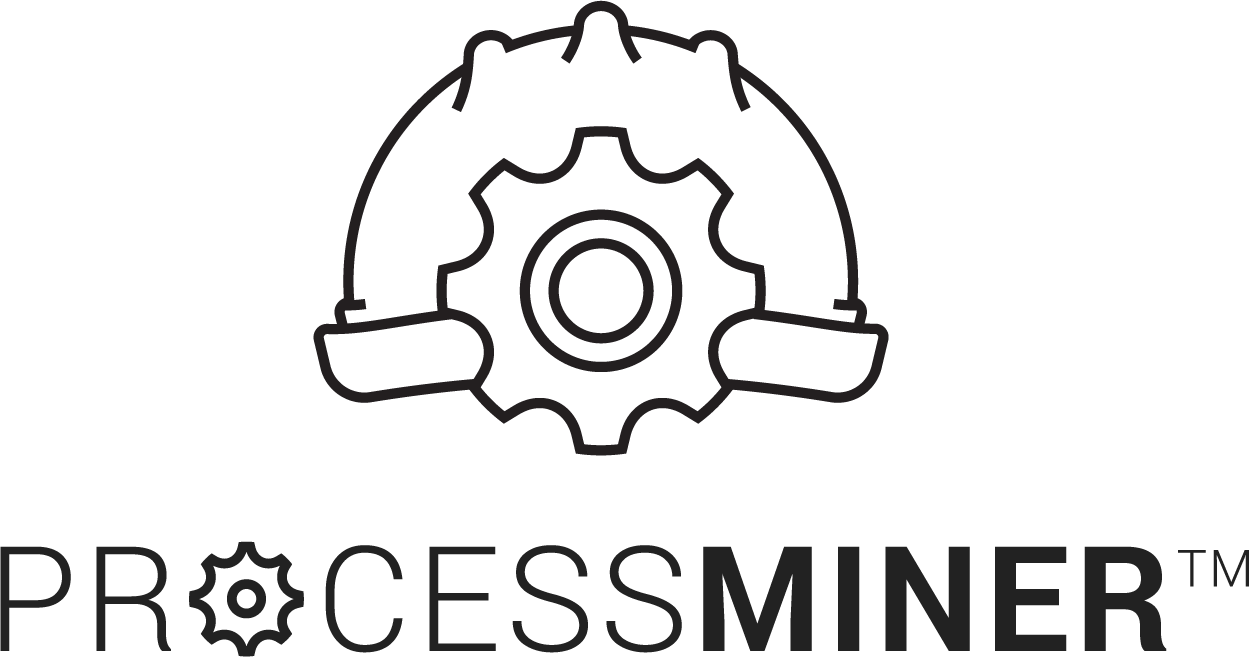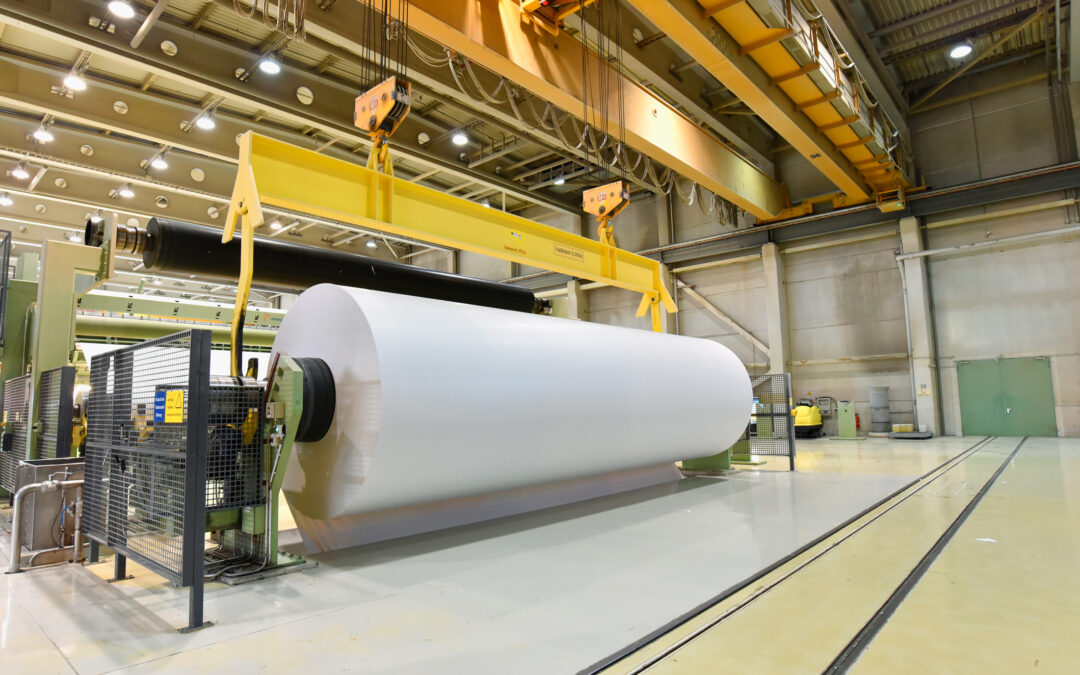Company
Paper Mill
Challenge: Identifying the Correct Chemistry Dosage Scheme
Identifying the correct chemistry dosage scheme in a complex manufacturing environment is difficult due to the intricate relationships between variables that must be understood and managed. Operators typically rely on past experiences to manually regulate chemical dosages, aiming to minimize raw material consumption while maintaining product quality within acceptable ranges.
The challenges of this manual process arise when conditions in the paper manufacturing process change over time due to parameter control variations, such as shifts in raw materials or machine speed. For this particular paper mill, these unpredictable variations made it increasingly difficult to maintain optimal chemistry dosage, often leading to inconsistencies in product quality and increased raw material usage.
Such changes make it difficult to predict product quality ahead of lab tests, often resulting in reactive control adjustments by operators. That’s the challenge this paper mill faced — underscoring the need for predictive models that can be updated frequently as historical data quickly becomes obsolete.
Solution: Fine-Tuning Chemistry Dosage With AI
Successfully addressing quality control challenges requires a continuously evolving and adaptive model to ensure accuracy and maintain process efficiency. Seeking to implement a solution to autonomously control chemistry dosage, the mill decided to explore Solenis OPTIX™ Applied Intelligence, powered by ProcessMiner.
OPTIX fine-tunes chemistry dosage processes by prescribing recommended corrective actions to optimize performance. This aim is to reduce raw material use and costs while ensuring operational speed and product quality are maintained.
The platform accomplishes this by leveraging physical paper property measurements, detailed papermaking process knowledge, and system metadata to create a mathematical model of the papermaking system. This continuous learning model generates insights that accurately predict the paper machine’s key performance indicators (KPIs), enabling precise and actionable improvements in the chemistry dosage process.
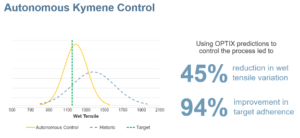
Because OPTIX was designed to be an adaptive and evolving artificial intelligence platform, it automatically and simultaneously learns these relationships. Its adaptive analytics system accurately learns complex variable relationships in pulp and paper manufacturing processes, yielding a digital measure of product quality.
Each time the system encounters a new data point, it initiates a sequence of steps to update the AI platform. This continuous process allows the platform to adapt, evolve, and provide real-time, holistic recommendations.
The mill benefits from a prediction system that continuously self-adapts to process changes, ensuring it remains responsive to fluctuations in raw materials, machine speed, and other operational variables. The system autonomously selects and updates the best prediction model to maintain accuracy, rerunning it at regular intervals and instantly recalibrating whenever a process shift is detected. This proactive approach prevents missed triggers and enhances the mill’s ability to make timely, data-driven decisions.
The system automatically identifies and isolates measurement errors in real time using F-tests to ensure further reliability, preventing faulty data from compromising predictions. Given the complexity of these calculations, the mill leverages parallel processing across multiple computing units, enabling the system to deliver highly accurate, real-time predictions every 30 seconds—providing operators with actionable insights to optimize chemistry dosage and maintain product quality.
As a result, the mill decided to move forward with OPTIX. The platform stood out due to its predictive soft sensor capabilities, advanced machine learning algorithms, deep domain expertise, and ability to automatically apply recommendations for seamless process optimization.
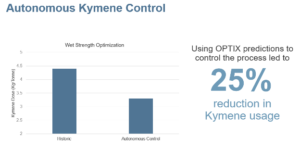
Results: Saving $600K/year
During onboarding, the mill loaded up to one year of historical data into OPTIX. It used past data to initialize and train its artificial intelligence system so it is ready to go as soon as it is launched.
The results of using OPTIX were game-changing for the paper mill. The comparison below illustrates the outcome of a predictive model that uses a standard, off-the-shelf approach without considering the papermaking process’s unique characteristics versus the customized model used by the paper mill. The model depicted on the left fails to mirror the actual process, while that on the right accounts for the complexity of papermaking abd delivers more accurate predictions.
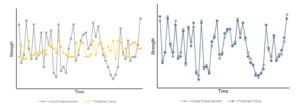
Autonomous manufacturing using AI with machine learning allowed the mill to improve product quality while optimizing raw material consumption. Using OPTIX’s closed-loop controller in conjunction with quality parameter predictions, the mill was able to control its strength chemistry autonomously to ensure optimal chemical feed and adhere to target parameters.
As a result of the autonomous control platform, the paper mill achieved unprecedented autonomous chemistry, allowing for:
- Improved Wet Strength
- Reduced Dry Strength by 25%
- Savings for Paper Mill: > $600K/year
- Grade ~30% Kymene using grade production
Disclaimer: This case study highlights the strategic partnership between ProcessMiner and Solenis in pulp and paper continuous manufacturing as strategic partners. ProcessMiner’s AI-driven solutions also extend beyond the pulp and paper industry, offering optimization in various sectors.
